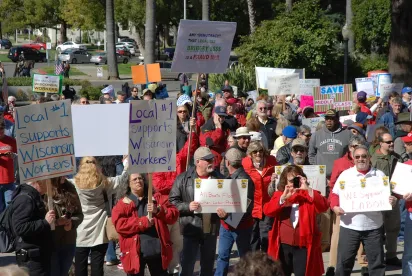In a significant development for employers, on July 10, 2023, California Governor Newsom revitalized the Industrial Welfare Commission (IWC) by allocating it $3,000,000 as part of the state’s 2023 budget bill (AB 102). AB 102 takes effect immediately. The IWC is a quasi-legislative agency within the California Department of Industrial Relations (DIR) established to investigate the health, safety, and welfare of California employees and issue Wage Orders governing wages, hours, and working conditions in the state. The California Supreme Court has made clear that when interpreting the wage orders and the Labor Code, one should do so with an eye towards reconciling any potential inconsistencies. See, e.g., Gerard v. Orange Coast Mem’l Med. Ctr., 6 Cal. 5th 443, 448 (2018) (“’[t]o the extent a wage order and a statute overlap, we will seek to harmonize them, as we would with any two statutes.’” (quoting Brinker Restaurant Corp. v. Superior Court, 53 Cal 4th 1004, 1026 (2012)); but see id. (“because the Legislature is the source of the IWC’s authority, a provision of the Labor Code will prevail over a wage order if there is a conflict”).
Unlike traditional regulations that cannot exceed the scope of the enabling legislation, the IWC’s Wage Orders can include provisions not included in the Labor Code, as well as provisions that go beyond what the Labor Code provides – typically providing greater protections to workers. More, courts have a limited review over IWC Wage Orders, holding them only to an arbitrary and capricious standard and imposing “as little judicial interference as possible.” Indus. Welfare Com. v. Superior Ct., 27 Cal. 3d 690, 702 (1980); see also Cal. Const. art. XIV, § 1 (“[t]he Legislature may provide for minimum wages and for the general welfare of employees and for those purposes may confer on a commission legislative, executive, and judicial powers.”); Indus. Welfare Com. at 702 (“Judicial authorities have repeatedly emphasized that in fulfilling its broad statutory mandate, the IWC engages in a quasi-legislative endeavor, a task which necessarily and properly requires the commission’s exercise of a considerable degree of policy-making judgment and discretion.”).
The IWC of the Past
The IWC was founded in 1913 to regulate wages, hours, and working conditions for women and children across California. In the early 1970s, the IWC’s focus was broadened to also include men, after many of its original wage orders were found discriminatory in violation of Title VII.
Made up of five members appointed by the governor, with the consent of the Senate, the IWC was comprised two representatives of organized labor, two representatives of employers, and one member representing the general public. Members served four-year terms.
The IWC would conduct hearings where it would take testimony and evidence before voting on implementing or altering Wage Orders. In its first 91 years, and until it was defunded, the IWC issued Wage Orders spanning more than a dozen industries and occupations, including professional, mechanical, household, technical, agricultural, and clerical occupations; certain on-site occupations in the construction, drilling, logging, and mining industries; and the manufacturing, personal services, canning, amusement and recreation, transportation, housekeeping, mercantile, broadcasting, motion picture industries; and other industries related to agriculture. Generally speaking, the Wage Orders spell out the rules for paying the minimum wage and overtime, providing meal and rest breaks, supplying employees with uniforms, equipment, and suitable seating, along with numerous other workplace standards.
In 2004, the California legislature defunded the IWC, after an IWC made up of a majority of members appointed by the then-Governor Gray Davis, a Democrat, implemented a number of new workplace requirements following the passage of AB 60 (“Eight Hour Day Restoration and Workplace Flexibility Act of 1999”) in 1999. At the time, many saw defunding the IWC as a means to prevent the IWC from altering the many Labor Code changes ushered in by AB 60.
The IWC of the Future
With its first funding in nearly 20 years, employers should expect the IWC to become active, and potentially reshape many of the requirements currently in the Wage Orders. AB 102 mandates that any changes to the Wage Orders be no less protective than what existing law provides. AB 102 also directs the IWC to prioritize consideration of industries where more than 10% of the workforce is at or below the federal poverty level. As a consequence, employers in the cleaning, maintenance, farming, fishing, forest, and service industries may well become the early focus of the newly funded IWC. See A Snapshot of California’s Working Poor, Pub. Pol’y Inst. of Cal., (providing statistics concerning what is characterized as the “working poor” by industry).
Governor Newsom will have to act fast to appoint the five new members of the IWC, and the IWC will have to move quickly with its work. The IWC will have until January 1, 2024, to convene and consider amendments to the current Wage Orders (or to implement new ones), which would take effect by October 31, 2024.
Employers may want to let the governor know who they think should be appointed to the IWC. Employers should also monitor the IWC’s activities and engage with the IWC as it considers implementing new Wage Orders and modifying existing ones.



 />i
/>i
